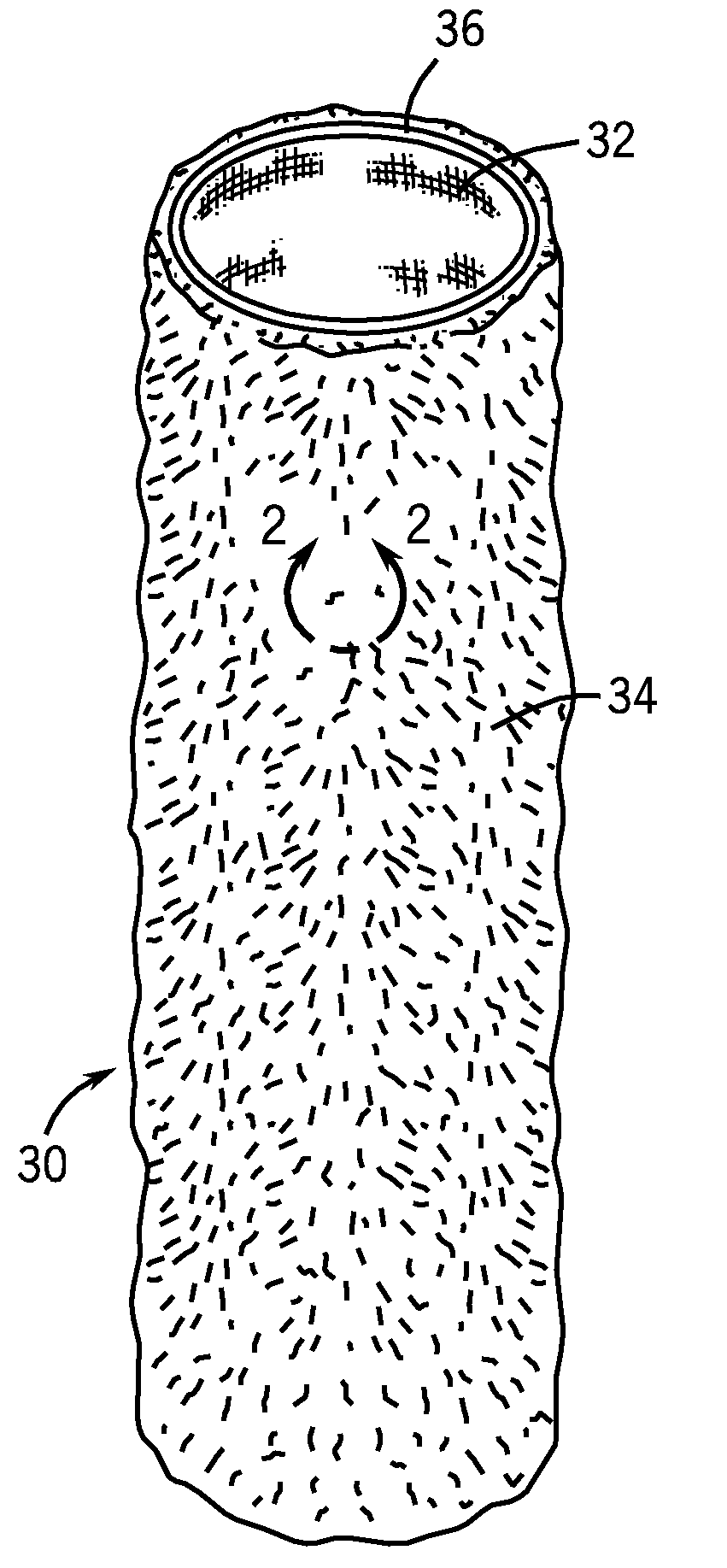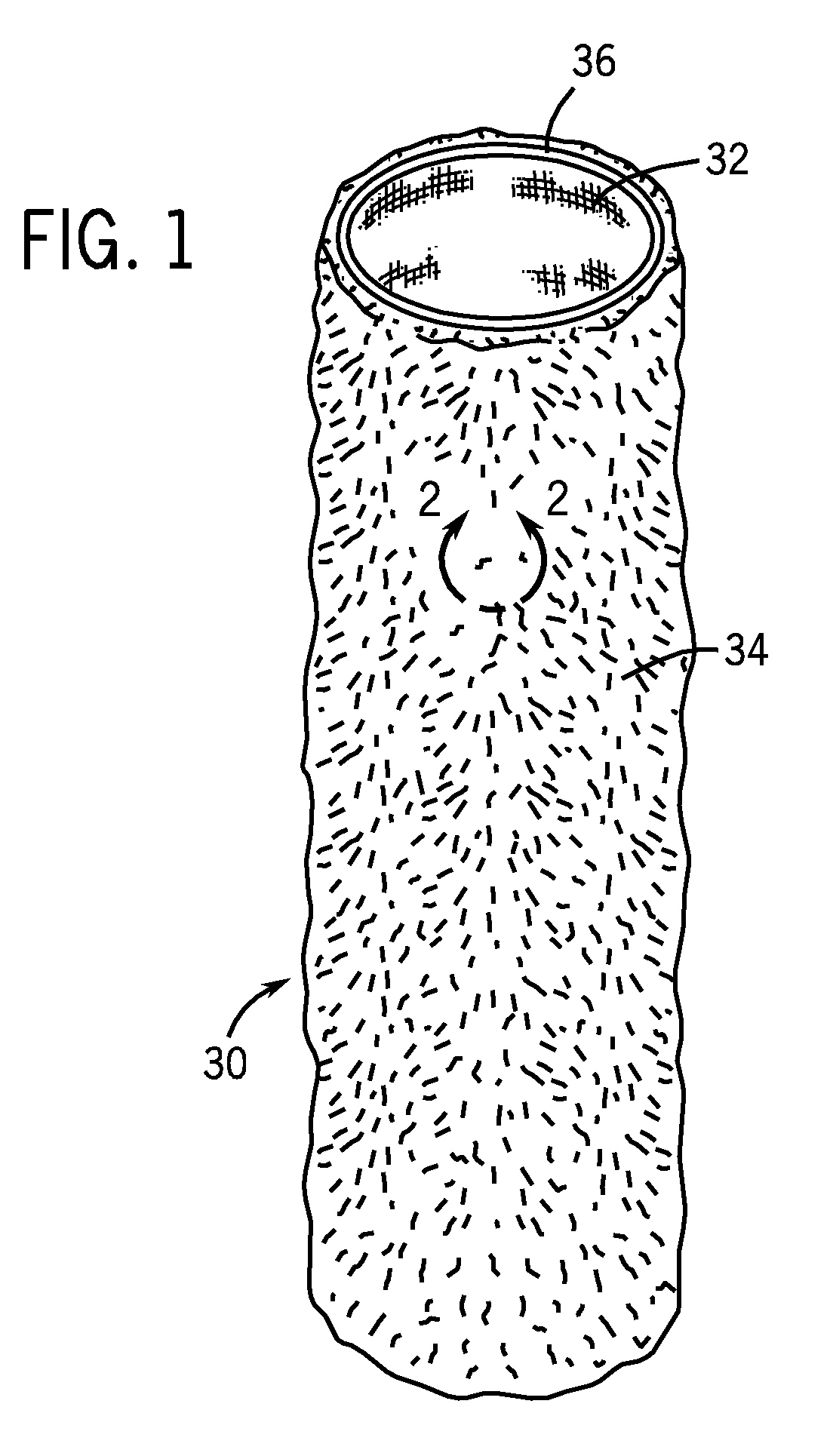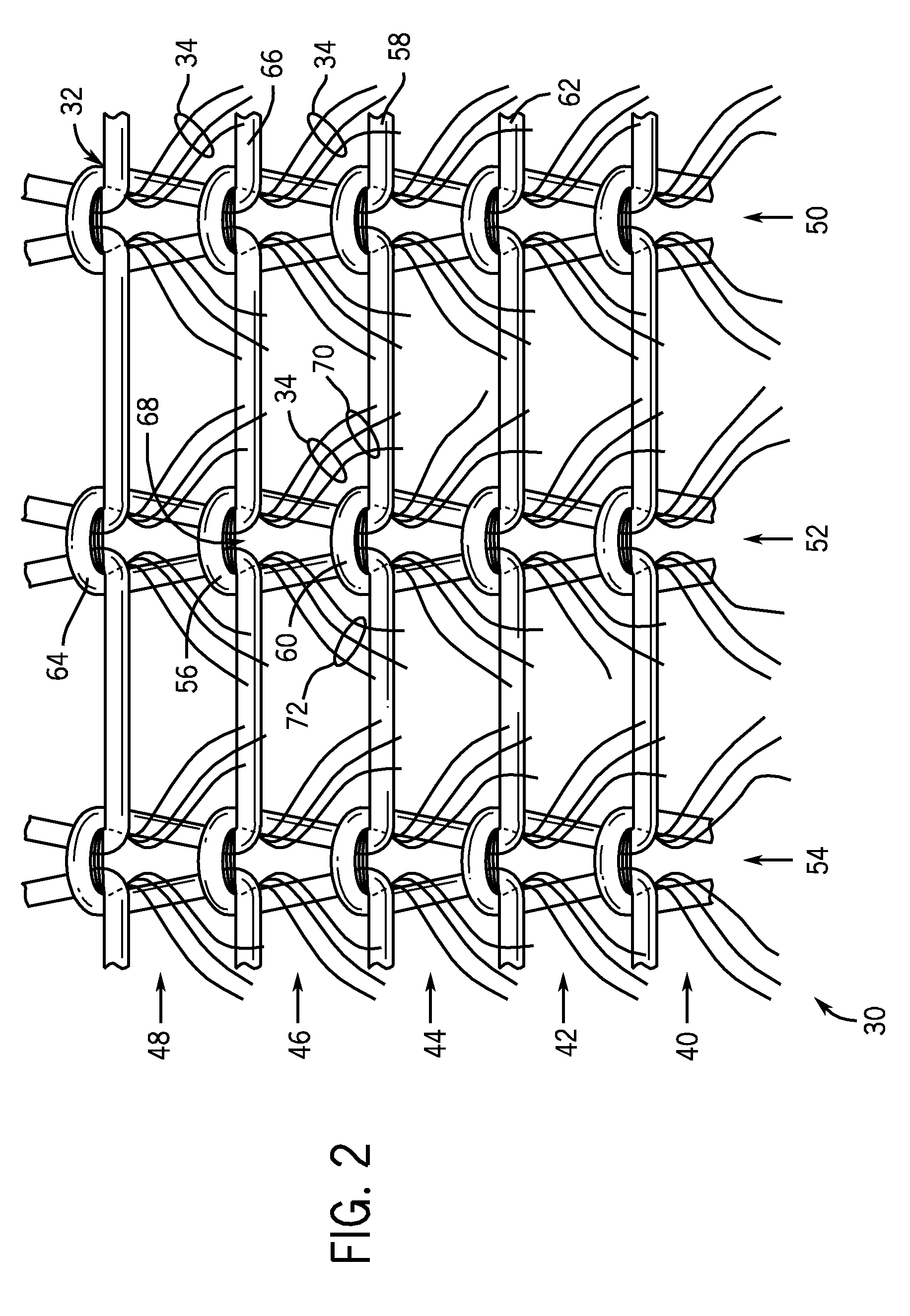Methods Of Manufacturing Paint Roller Covers From A Tubular Fabric Sleeve
a tubular fabric and paint roller technology, applied in the field of manufacturing paint roller covers, can solve the problems of inability of sliver knitting machines to produce tubular knitted pile fabrics, material costs and labor costs, and the cost of coating materials, so as to facilitate the mass production of paint roller covers, facilitate the manufacture, and durable and long-lasting
- Summary
- Abstract
- Description
- Claims
- Application Information
AI Technical Summary
Benefits of technology
Problems solved by technology
Method used
Image
Examples
Embodiment Construction
[0073]The paint roller cover manufacturing method of the present invention uses a tubular paint roller fabric that may be either a tubular knit base that is made of a low melt yarn having sliver pile fibers extending outwardly therefrom or a tubular knit base that is made of a low melt yarn having cut pile yarn segments extending outwardly therefrom. The former tubular paint roller fabric is discussed in detail in the above-incorporated by reference U.S. patent application Ser. No. 11 / 740,119 and is shown in FIGS. 1 and 2 herein, and the latter tubular paint roller fabric is discussed in detail in the above-incorporated by reference U.S. patent application Ser. No. 12 / 116,022 and is shown in FIGS. 3 and 4 herein.
[0074]Referring first to FIG. 1, a tubular sliver knit segment 30 that may be continuously knitted in an extended length is shown. The tubular sliver knit segment 30 consists of a knit backing or base material 32 having pile fibers 34 extending from the knit base material 32...
PUM
| Property | Measurement | Unit |
|---|---|---|
| temperature | aaaaa | aaaaa |
| temperature | aaaaa | aaaaa |
| temperature | aaaaa | aaaaa |
Abstract
Description
Claims
Application Information
 Login to View More
Login to View More - R&D
- Intellectual Property
- Life Sciences
- Materials
- Tech Scout
- Unparalleled Data Quality
- Higher Quality Content
- 60% Fewer Hallucinations
Browse by: Latest US Patents, China's latest patents, Technical Efficacy Thesaurus, Application Domain, Technology Topic, Popular Technical Reports.
© 2025 PatSnap. All rights reserved.Legal|Privacy policy|Modern Slavery Act Transparency Statement|Sitemap|About US| Contact US: help@patsnap.com



